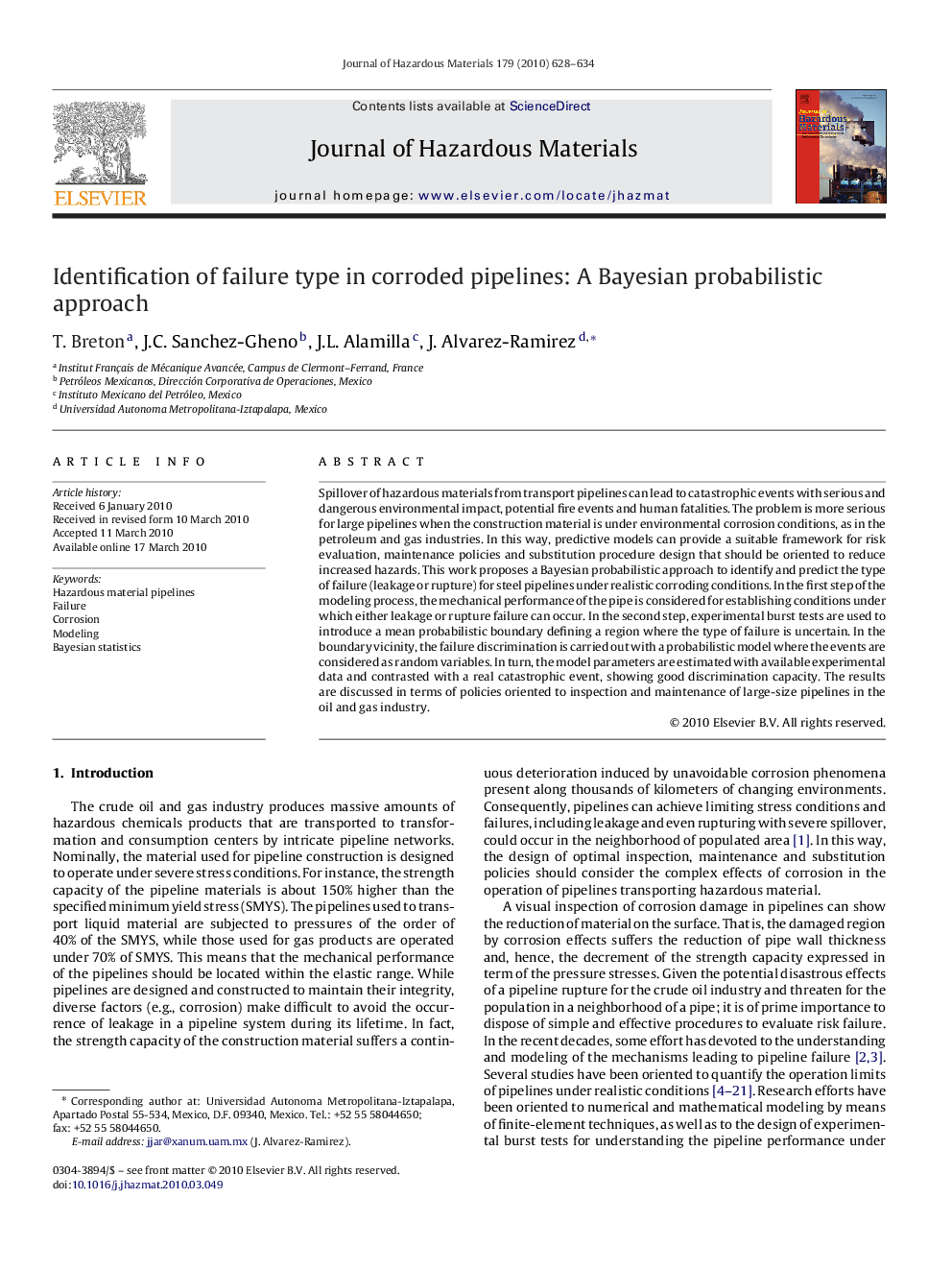| Article ID | Journal | Published Year | Pages | File Type |
|---|---|---|---|---|
| 580412 | Journal of Hazardous Materials | 2010 | 7 Pages |
Abstract
Spillover of hazardous materials from transport pipelines can lead to catastrophic events with serious and dangerous environmental impact, potential fire events and human fatalities. The problem is more serious for large pipelines when the construction material is under environmental corrosion conditions, as in the petroleum and gas industries. In this way, predictive models can provide a suitable framework for risk evaluation, maintenance policies and substitution procedure design that should be oriented to reduce increased hazards. This work proposes a Bayesian probabilistic approach to identify and predict the type of failure (leakage or rupture) for steel pipelines under realistic corroding conditions. In the first step of the modeling process, the mechanical performance of the pipe is considered for establishing conditions under which either leakage or rupture failure can occur. In the second step, experimental burst tests are used to introduce a mean probabilistic boundary defining a region where the type of failure is uncertain. In the boundary vicinity, the failure discrimination is carried out with a probabilistic model where the events are considered as random variables. In turn, the model parameters are estimated with available experimental data and contrasted with a real catastrophic event, showing good discrimination capacity. The results are discussed in terms of policies oriented to inspection and maintenance of large-size pipelines in the oil and gas industry.
Related Topics
Physical Sciences and Engineering
Chemical Engineering
Chemical Health and Safety
Authors
T. Breton, J.C. Sanchez-Gheno, J.L. Alamilla, J. Alvarez-Ramirez,
